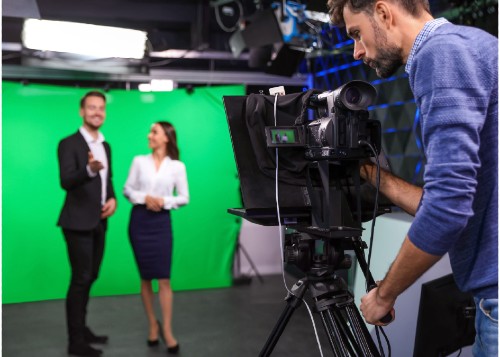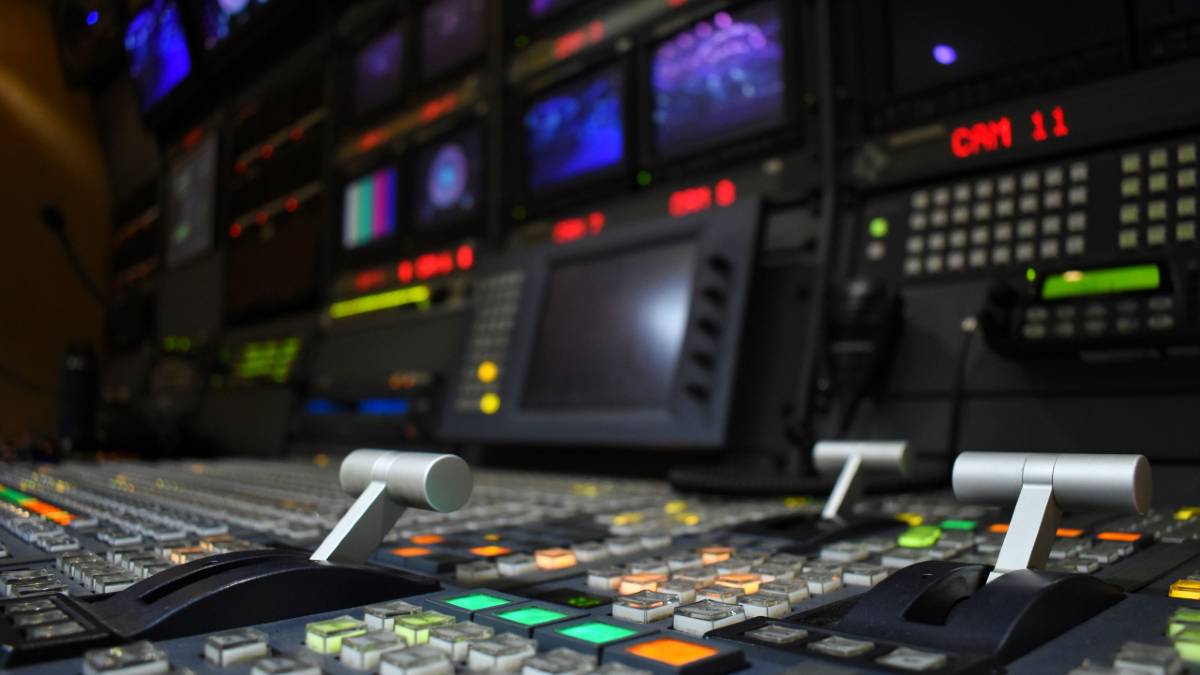Why isn't UHDTV yet part of the current television production infrastructure?
By: IEEE, PhD Carlos Pantsios
The next generation of TV experience is UHDTV, a service that has the optimal combination of several enhanced parameters, such as: higher resolution (HR), higher frame rate (HFR), improved colorimetry and dynamic range (HDR).
The new spatial resolution of "4k (3840 x 2160)" was not enough to justify its introduction to the market, and a depth of 10-bit was required as a minimum for the UHD-1 and UHD-2 versions, which represent the new 4k->4,000-pixel and 8k->8,000-pixel digital cinema systems. In the case of production, a consensus of 12 to 16-bit depth was established for UHDTV. Regarding compression, the discussion revolves around HEVC (H.265), with special attention on the Main 10 profile, with 10 bits for color.
The advantage that MPEG-5 HEVC achieves over MPEG-4 AVC will depend on the criticality of the content to be compressed, however, many experts argue that a 40% advantage can be achieved. In relation to the audio for UHDTV, a next-generation immersive audio system is proposed.
Regarding the study and transmission infrastructure, variants of real-time SDI, or network-based systems, were discussed. There is even consensus that network and SDI-based technologies should coexist, each applied to its corresponding space.
Currently, there are many types of real-time UHDTV interfaces, both in studio and production, and it is not known for sure which of them will prevail in the future or which broadcasting infrastructure will prevail in the coming years. Broadcasters and manufacturers of UHDTV production equipment also face the same dilemma.
Requirements for a new UHDTV interface infrastructure: While the discussion in the medium focuses on the parameters of the image format, such as: resolution, higher transmission rate of video frames, bit depth or color gamut, the situation of the infrastructure of the real-time studio and production develops under the gaze and attention of consumers. It should be noted, however, that the availability of cost-effective infrastructure and an open standard are key to the acceptance of UHDTV in content creation.
Multiple HD-SDI or 3G-SDI solutions were used in the test productions that were carried out, such as the NHK Super High Vision systems, or the simple UHD-0 productions (quad HD or 4k). These trials were obviously not a solution for efficient production infrastructures in the short or medium term.
Certainly, any broadcaster who pursues a futuristic plan for his investment in infrastructure is confronted with the doubt of whether the new infrastructure, for the coming years, will have to be able to handle, in addition to HDTV, some variants of UHDTV (UHD-0, UHD-1, etc.).
The requirements for a new UHDTV interface infrastructure for production (excluding intra-facility and WAN links) can be summarized as follows:
(1) Ability to offer video exchanges in isochronous or synchronous form (including support for various video image transmission rates, including fractional rates),
(2) Ability to support high data rates (see Table) in line with the UHDTV baseband picture format, as defined in SMPTE 2036-1 and ITU-R BT.2020,
(3) Plug-and-play user-friendliness (e.g. In the field, during events),
(4) Low latency, fast re-sync, low jitter,
(5) Ability to withstand accurate picture switching,
(6) Cost efficiency,
(7) Packaged signal routing capability (in the case of networks),
(8) Stream or format identification,
(9) Point-to-point or point-to-multipoint operation capability,
(10) Coaxial or fiber optic support,
(11) Be image format agnostic (Digital Cinema, UHDTV, HDTV, Stereoscopic Images),
(12) Scalability from single link to multilink,
(13) Auxiliary data support and embedded audio,
(14) Simple and open standard interface,
(15) etc.
Some of these requirements apply to the HD-SDI infrastructure, when it was defined. Others were added when considering the use of the network.
The following table shows examples of typical data rates corresponding to image parameters for uncompressed video, based on SMPTE 2036-1 and ITU-R BT.2020 standards.
To meet the general requirements, three fundamental and different approaches proposed by the industry can be determined, which are also reflected in the different standardization activities. These will be described below:
 Point-to-point interface for special purposes
Point-to-point interface for special purposes
SMPTE has already defined a dedicated UHDTV interface, called SMPTE 2036-3. This standard specifies the mapping of signals in "Ultra High Definition Television" to Serial/Data Signal interface for single-link or Multi-link, at 10 Gb/s. Depending on the UHDTV picture format and the corresponding data rate, the implementation of single-link or multi-link is required. This interface has been used in some specialized UHDTV equipment.
UHDTV interfaces based on the evolution of SDI
A more advanced evolution of the SMPTE standardization activity is the definition of the so-called "Gear-box" approach. This is an evolution of the well-known SDI-based technologies. In addition to the well-established 3G-SDI interfaces, the 6G, 12G and 24G SDI variants were defined and standardized for single-link and multi-link applications.
The official designations of these standards are: (a) 6Gbit/s variant: SMPTE 2081-1 coax, 2081-2 for optical parameters, (b) 12Gbit/s variant: SMPTE 2082-1 coax, 2082-2 for optical parameters, c) 24 Gbit/s variant: SMPTE 2083-1 coax, 2083-2 for optical parameters.
Demonstrations of the operation of different variants of the SDI Gear-box, for UHDTV over coax and fiber optics, were shown at multiple conventions and some products based on these standards have already been presented.
UHDTV interfaces based on IP networks
The trend to use interfaces based on packaged networks, both in production and in the studio, has been a practice for some years.
Recently, in 2013, the EBU, SMPTE and the Video Service Forum created a joint action force on media using networks. The particular challenges posed by networks, such as jitter, the transfer of uncompressed signals in real time and in isochronous form, exact frame switching, device control and recognition, resource management and network management, are some of the elements that are being studied.
This joint action force, for some time now, has already moved into the phase of analysis of a system and its architecture, completely immersed in a broadcasting network environment. With the considerable increase in bandwidth to 10GEthernet, 40GEthernet and other protocols, which work with data at rates corresponding to UHDTV, broadcasting over networks seems to work. Mezzanine (intermediate) compression systems with extremely low latency will be able to assist in data rate management in a network approximation for UHDTV.
Too many solutions for UHDTV and lack of harmonization
The SMPTE follows a pragmatic path with respect to UHDTV interfaces, defining first a specialized UHDTV interface (SMPTE 2036-3), followed by standards for hierarchical series of SDI-based UHDTV interfaces. Both standards meet the industry's demand for short- and medium-term solutions in the studio (camera to recorder, player, switching, etc.), for the purpose of producing UHDTV content.
In meetings held during 2013, ITU-R Working Party 6B made tremendous efforts to harmonize the different proposals coming from the industry, to avoid multiplicities of UHDTV interface standards for similar applications.
The successful introduction of HDTV into the production environment was based on the agreement of a simple standard for the HD-SDI interface. This agreement made possible the development of interoperable equipment and greater cost efficiency. There is no doubt that a multiplicity of standard UHDTV interfaces on the market would be very counter-productive and could lead to the cancellation of the distribution of cost-effective intra-structures and production systems.
It is highly desirable that the so-called UHDTV eco-chain and its standards be clearly defined to have a single version known as Ultra HD.
Manufacturers and users, represented in the different standardization bodies, must work together to harmonize and constrain different standards. The argument that the market will decide which of the standards will be chosen may eventually be correct, but in the meantime it is possible that market size will be lost, and a lot of money may be lost to both manufacturers and broadcasters.

























Leave your comment